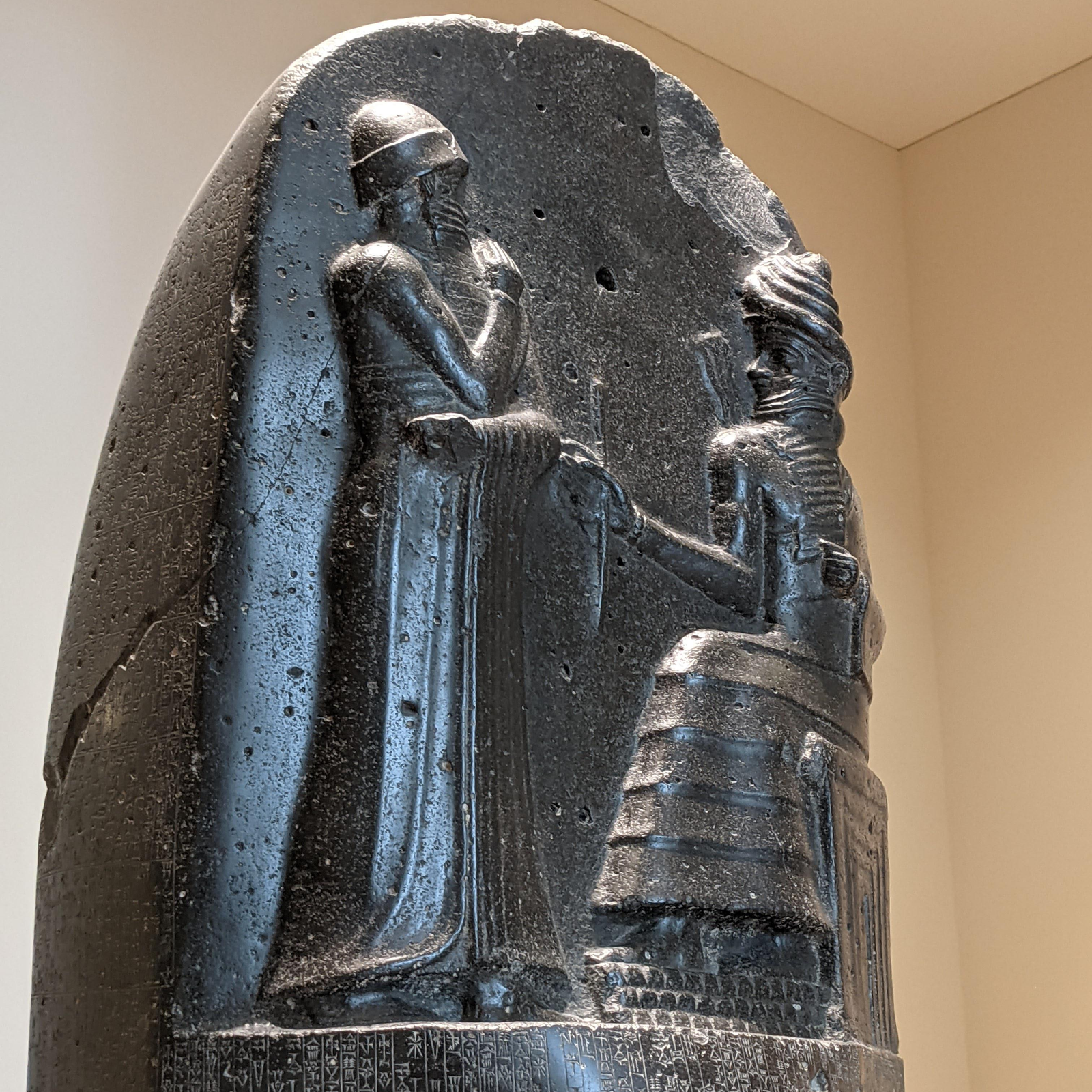Code of Hammurabi

The Code of Hammurabi is one of the oldest and most complete written legal codes, created by the Babylonian king Hammurabi, who reigned from 1792 to 1750 BC2. This code consists of 282 laws that cover various aspects of daily life, including criminal law, family law, property law, and commercial law2. The laws are written in the Old Babylonian dialect of Akkadian and are inscribed on a basalt stele, which is now housed in the Louvre Museum in Paris.
The stele is about 2.25 meters tall and features an image of Hammurabi receiving the laws from Shamash, the Babylonian sun god and god of justice2. The text is divided into a prologue, the laws themselves, and an epilogue. The prologue explains that Hammurabi was chosen by the gods to bring justice and prevent the strong from oppressing the weak. The laws are written in a conditional format, often starting with “if” and followed by the consequences.
For example:
- Law 196: “If a man puts out the eye of another man, his eye shall be put out.”
- Law 218: “If a physician makes a large incision with the operating knife and kills him, or opens a tumor with the operating knife and cuts out the eye, his hands shall be cut off.”
- Law 138: “If a man wishes to separate from his wife who has borne him no children, he shall give her the amount of her purchase money and the dowry which she brought from her father’s house.”
Historical Context
Hammurabi was the sixth king of the First Babylonian Dynasty, reigning from around 1792 BC to 1750 BC. He expanded his kingdom and established Babylon as a major power in Mesopotamia. The Code of Hammurabi was created to unify various city-states under his rule with a common set of laws.
Structure and Content
The Code consists of 282 laws, inscribed on a large stone stele. These laws are organized into several categories, including:
- Economic Provisions: Laws on trade, tariffs, and pricing.
- Family Law: Laws on marriage, divorce, and inheritance.
- Criminal Law: Laws on theft, assault, and murder, specifying various punishments.
- Civil Law: Laws on debt, contracts, and property.
Key Features
- Retribution Principle (Lex Talionis): This is famously known as “an eye for an eye, a tooth for a tooth.” It means that the punishment should fit the crime.
- Social Hierarchy: The laws differentiated between various social classes, including nobles, freemen, and slaves, often prescribing different punishments for the same crime depending on the perpetrator’s and the victim’s status.
- Prologue and Epilogue: The code begins with a prologue that explains Hammurabi’s divine authority to establish the laws, and it ends with an epilogue that emphasizes his commitment to justice and calls for the future rulers to uphold his laws.
Notable Laws
Here are a few examples of the laws in the code:
- Law 196: “If a man put out the eye of another man, his eye shall be put out.”
- Law 229: “If a builder builds a house for someone, and does not construct it properly, and the house which he built falls in and kills its owner, then that builder shall be put to death.”
- Law 282: “If a slave says to his master: ‘You are not my master,’ if they convict him his master shall cut off his ear.”
Impact and Legacy
The Code of Hammurabi is one of the earliest examples of a written legal system, influencing later legal codes in the ancient Near East and even Greek and Roman laws. Its emphasis on justice and retribution can still be seen in modern legal principles.

I’m really inspired with your writing skills as neatly as
with the format in your weblog. Is that this a paid subject matter or did you modify it your self?
Either way keep up the excellent quality writing, it is uncommon to see a great blog
like this one these days. Leonardo AI x Midjourney!